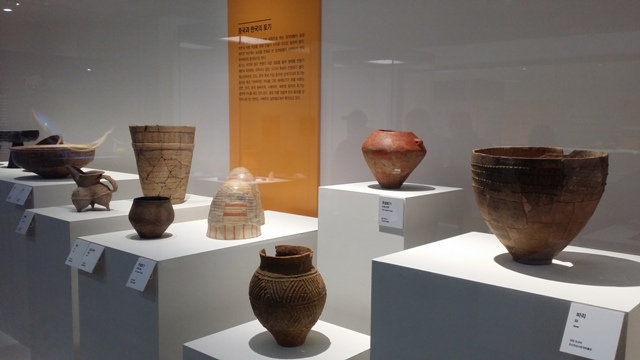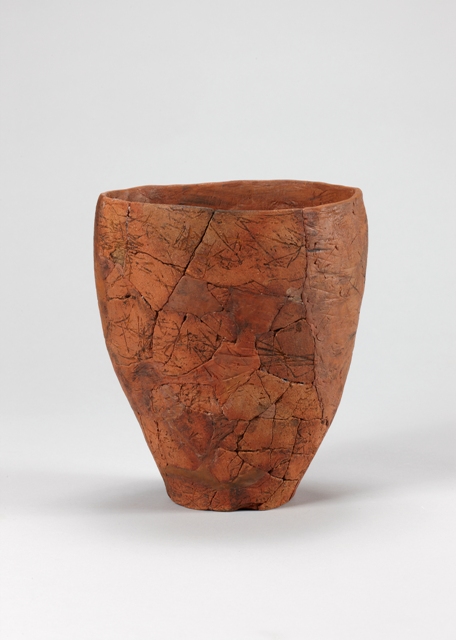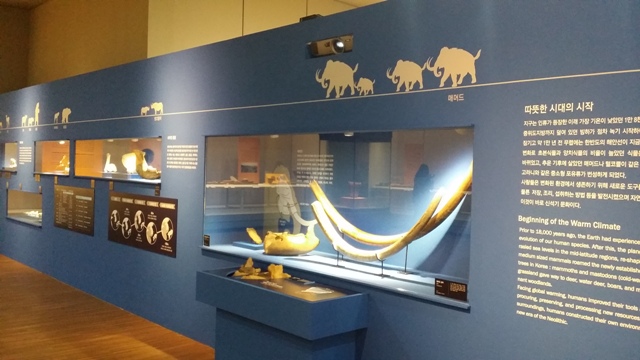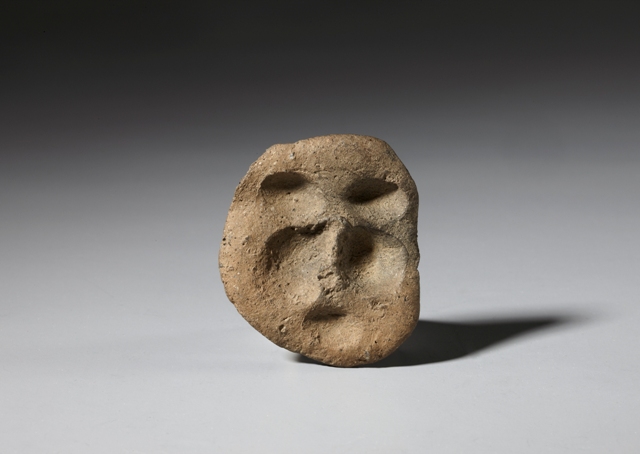| |
 |
|
| Some of the neololithic pottery on display at Jeju National Museum. Photo by Jeju national Museum |
Although Gosan-ri is famed for its geology — it boasts Suwolbong Peak, a Global Geopark Site — and meteorology — a weather station sits atop said peak — arguably it is most valued for its archaeology.
Below an uncharacteristically ordered field system in this west coast village — an experimentation with rice plantations in the 1970s mean that Jeju’s winding black-stone walls are absent here — sits another site of change and technological innovation.
In 1987, archaeological excavations discovered pottery, tools and remains of settlement which forced scholars to rewrite Korean history. In 1998, it was confirmed that Gosan-ri was the birthplace of the neolithic age on the Korean Peninsula.
Continuous research by Jeju National University Museum, Jeju Archaeological Institute and Jeju Culture Heritage Institute has unearthed further remains of permanent shelter as well as 9,900 pieces of stoneware and 1,000 pieces of earthenware.
Some of these items are now on display at Jeju National Museum in an exhibition on the Korean neolithic open until June 5.
| |
 |
|
| One of the bowls found at the site in Gosan-ri. Photo by Jeju National Museum |
A timeline in the Special Exhibition Room takes visitors on a journey from the dawn of the age 18,000 years ago when temperatures were rising, ice sheets were melting and coastal regions were flooding.
Humans were on the move, straddling the past and the future, as megafauna such as mammoth and giant elk vanish from the archaeological record, being replaced by more familiar mammals such as deer and boar.
The lessons for the present are not lost: adaptation to a changing climate requires revolutionary changes to lifestyles and technologies if we are to survive.
“Facing global warming,” the museum display (one of the few in English) tells us, “humans improved their tools and invented new techniques for procuring, preserving, and processing new resources.”
The new technologies and lifestyle changes associated with the neolithic include permanent settlement, pottery and food storage, and experimentation with agriculture.
| |
 |
|
| Another neolithic display. Photo by Jeju National Museum |
The neolithic was not monolithic — its expressions were diverse and dispersed. Nor was it short-lived — it begins around 12,000 years ago in Southwest Asia and extends to the advent of civilization (cities, writing and metallurgy, the dates for which vary by region).
It also differs in character: In Europe, for example, it is marked by agriculture and pottery finds (in that order); In East Asia pottery finds precede agriculture, with both appearing considerably earlier than in Europe.
It is probably from China that the memes of the neolithic were transmitted to Korea where pottery appears at Gosan-ri around 10,000 years ago.
Jeju neolithic communities were not yet practicing agriculture (that came around 5,000 years later) so they relied on fruit and nuts for 80 percent of their diet. The pottery was mostly used for storage of such bounty.
The delicate earthenware on display in the Special Exhibition Room soon dispels any preconceptions of brutish hominids.
| |
 |
|
| A clay sculpture of a face Photo by Jeju National Museum |
We are also challenged by the reconstructed, and ruggedly handsome, face of a neolithic Jeju Islander; curiously, he has blue eyes (a botched job by French sculptors, I was told).
The other displays including neolithic spears, fishing nets, and burials hint at the changes the world was undergoing as grasslands became broadleaf woodlands and coastlines were being deluged.
Jeju was cut off from mainland Asia some 15,000 years ago, but rising sea levels up until 11,000 years ago continued to flood lands. “Merging warm and cold currents along the east and south coasts,” the display states, “caused a surge in marine species diversity.”
As in all flux, this presented opportunities to industrious individuals who took to the seas to harvest its fruits.
The Gosan-ri finds include a number of stone tools for marine harvesting and it is tempting — if misguided (haenyeo are first recorded just a few centuries ago) — to imagine stone-age diving women taking their first catch of abalone .
The Jeju Islanders of the time were trailblazers, going against the hegemonic narrative of Korean history which puts Jeju at the periphery and subject to periodic civilizing efforts from the mainland.
Here is a reminder that Jeju is also a center, as Jeju people have always known, and it led a revolution that laid the foundations for the rich regional civilization to come.
Jeju National Museum
261 Imhang-ro, Jeju City
9am-6/7/9pm (depends on season and day)
+82-64-720-8000 / jeju.museum.go.kr
|























